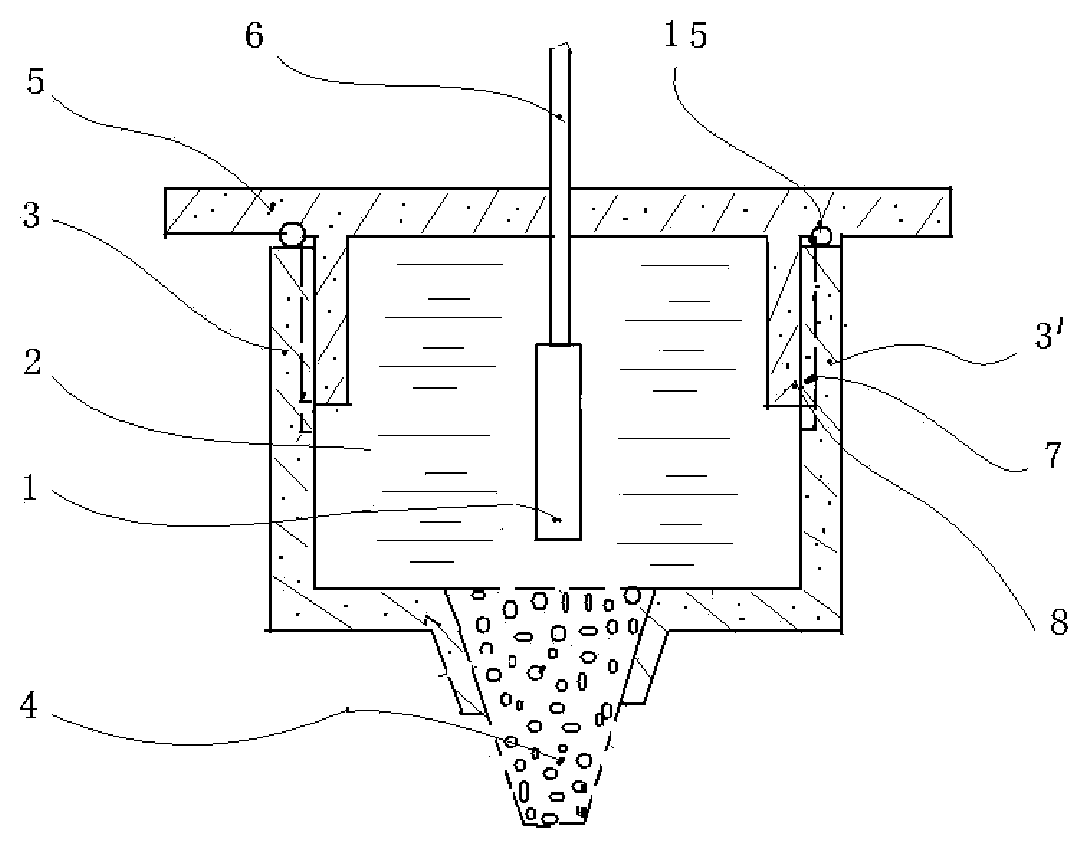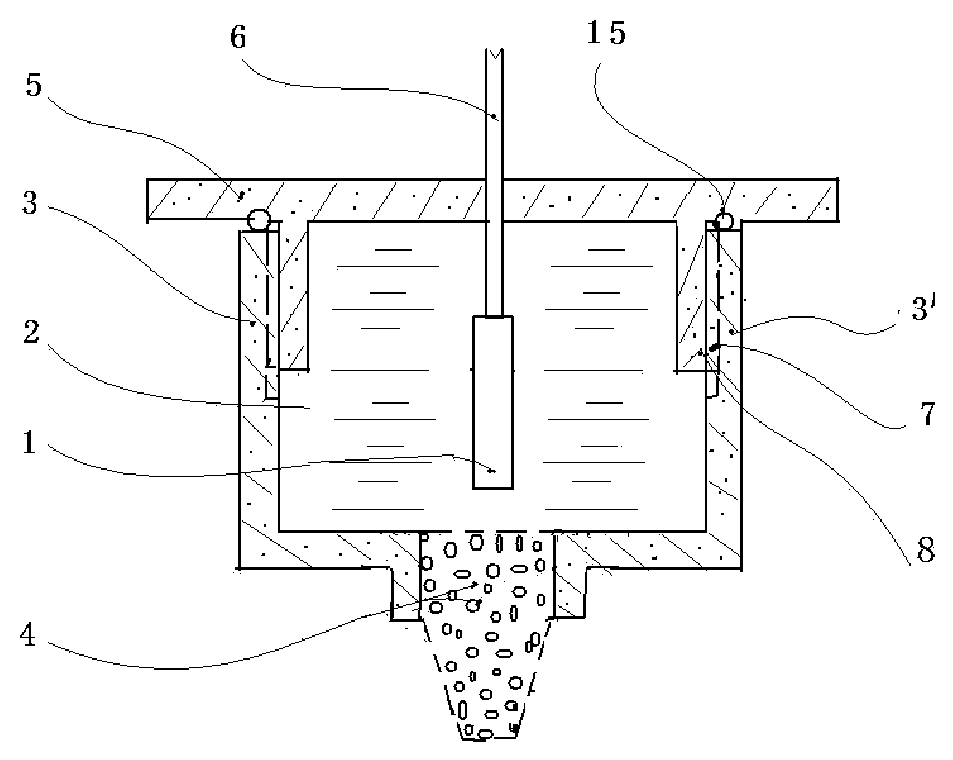Bio-electricity signal sensor
A bioelectrical signal and sensor technology, which is applied in the fields of sensors, medical science, diagnostic recording/measurement, etc., can solve the problems of cleaning, troublesome operators, high electrode impedance, etc., and achieve improved measurement signal-to-noise ratio, stable skin impedance, and skin The effect of low impedance
- Summary
- Abstract
- Description
- Claims
- Application Information
AI Technical Summary
Problems solved by technology
Method used
Image
Examples
Embodiment 1
[0050] Embodiment 1: It is the basic embodiment of the bioelectrical signal sensor of the present invention. As shown in the figure, a bioelectrical signal sensor includes an electrode 1, an electrolyte 2, a cavity 3 capable of accommodating the electrolyte, and a porous column 4; one end of the cavity 3 is a sealed end, and the other end is connected to the porous column 4 The electrolyte entry end is connected, and the other end of the porous column 4 is the working end in contact with the organism; at least a part of the electrode 1 is immersed in the electrolyte 2; the electrode 1 is a conductor, and the cavity 3 is a conductor or insulator.
Embodiment 2
[0051] Embodiment 2: is the further embodiment of embodiment 1. like Figure 1-10 As shown, the bioelectric signal sensor has one porous column. The number of porous columns can also be multiple, such as Figure 11 , 12 , 13 shown. The porous columns are evenly distributed on the end surface of the cavity 3 with the centroid of the cavity end surface as the center, or the porous columns can be evenly distributed side by side on the end surface of the cavity. The porous column adopts multiple porous columns on the end face of the cavity, and the electrolyte that seeps through the capillary of each porous column establishes a good ion channel with the electrode and conducts conduction with the electrode. The measured bioelectrical signal is equivalent to the addition of a single porous column. And, the measurement signal quality is good. In the bioelectrical signal sensor, the porous column 4 is made of porous ceramic material or a composite material of porous ceramic. Por...
Embodiment 3
[0053] Embodiment 3: is the further embodiment of embodiment 1. like figure 1 As shown, in the bioelectrical signal sensor, the sealing end of the cavity 3 is a sealing cover 5, and the sealing cover 5 is connected to the body 3' of the cavity 3 in a detachable sealed and fixed connection, as shown in FIG. figure 1 , 2 , 5, 6, 7, and 11, the sealing cover 5 is threadedly connected to the body 3' of the cavity 3; the electrolyte inlet end of the porous column 4 is fixedly connected to the mounting hole on the end face of the cavity 3, and this implementation For example, the electrolyte inlet end of the porous column 4 is connected to the installation hole on the end surface of the cavity 3 by injection molding.
[0054] The electrolyte inlet end of the porous column 4 is connected to the installation hole on the end face of the cavity body 3, and there are also equivalent embodiments, such as figure 2 As shown, the electrolyte entry end of the porous column 4 is cylindrica...
PUM
 Login to View More
Login to View More Abstract
Description
Claims
Application Information
 Login to View More
Login to View More - R&D
- Intellectual Property
- Life Sciences
- Materials
- Tech Scout
- Unparalleled Data Quality
- Higher Quality Content
- 60% Fewer Hallucinations
Browse by: Latest US Patents, China's latest patents, Technical Efficacy Thesaurus, Application Domain, Technology Topic, Popular Technical Reports.
© 2025 PatSnap. All rights reserved.Legal|Privacy policy|Modern Slavery Act Transparency Statement|Sitemap|About US| Contact US: help@patsnap.com



